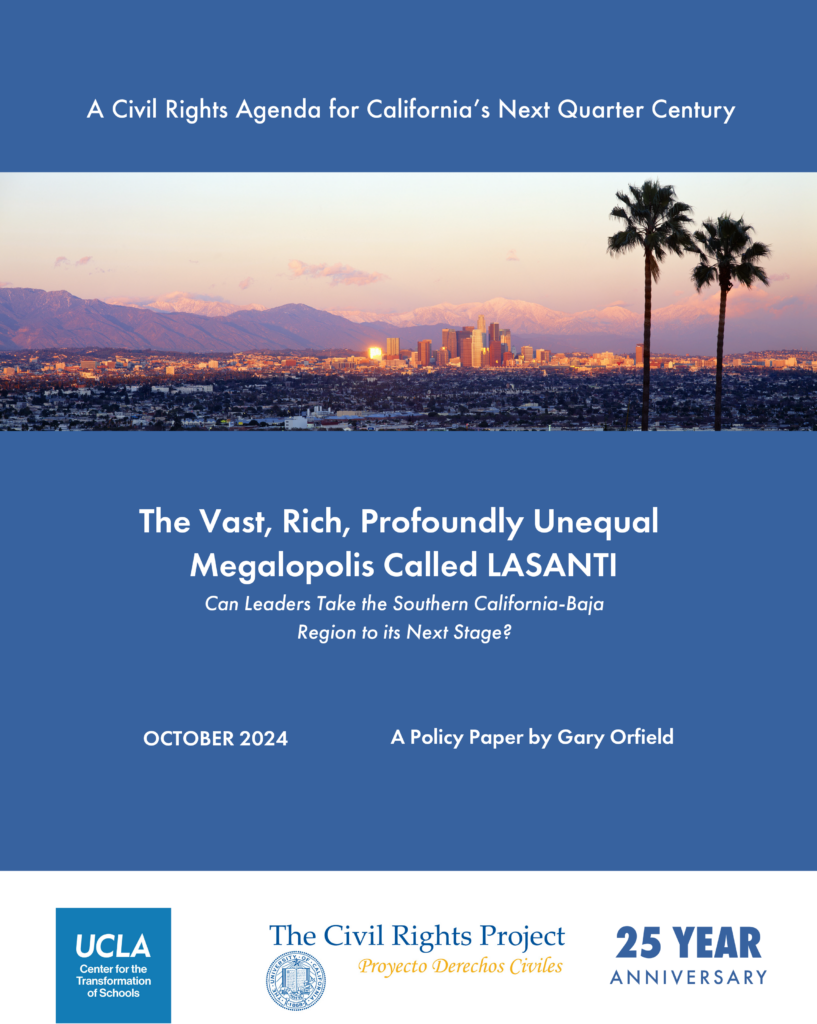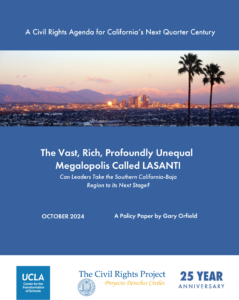INTRODUCTION
The more than 24 million people who live in urbanized Southern California and metropolitan Tijuana share one of the largest and most productive spaces on earth. The Civil Rights Project calls this region LASANTI,[1] more than 200 miles of continuous urbanization in what has become a great coastal megalopolis, a place of powerful contact between two large and important countries which share a great deal but are divided by walls, politics and language. The endless streams of cars and trucks crossing the border in both directions reflect the needs and complementary economies of the two nations.
LASANTI by itself is now the 11th largest economy in the world and critically important to the economies of California, the U.S. and Mexico. We are each other’s most important trading partner and we are interdependent in many ways. We are at a cusp of large changes that could be transformative if there were strong leadership.
In 1900 no one knew that a thin strip of land between the Pacific coast and the mountains and deserts stretching more than 200 miles, from Los Angeles to the Mexican village of Tijuana, would become a great megalopolis. Los Angeles had 102,000 people and San Diego less than 18,000. Tijuana was a dusty village of 234. Most of the space in between was agriculture, ranching or small towns. In Los Angeles there were real estate promoters and derricks in the recently discovered oil fields. Autos were still rare in L.A., which was to become the first great metro of the auto age. There were lots of problems: no significant rivers, no deep and protected harbors, no reliable water supplies, flooding, no major industries, and it was far from major markets. A half century later Los Angeles was America’s second largest city and the county had 4.2 million residents. San Diego County was up to 557,000. Tijuana had 60,000 people. There would soon be great freeways constructed down the coast, creating intense connections throughout what was becoming LASANTI.
This paper is part of the LASANTI Project, which explores many dimensions of social and economic change and inequality across the huge bi-national urbanized complex, stretching from the northern Los Angeles suburbs down through San Diego, to the Tijuana metropolitan area.
See a full description of The Lasanti Project here.
In compliance with the UC Open Access Policy, this report has been made available on eScholarship: escholarship.org/uc/item/4c54h250





